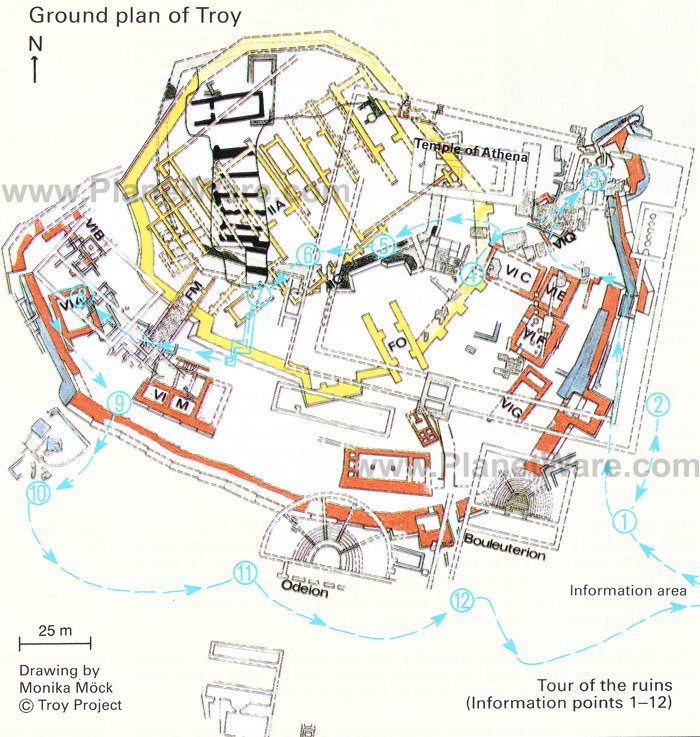Troy (Truva)
The wooden horse that stands outside the site is a modern addition, there to remind us of Homer's epics, but the city walls, layer upon layer of them, date back several millennia. Long thought to be a figment of the Greek poet Homer's imagination and written about in his epic The Iliad, Troy was excavated in the 1870s by Heinrich Schliemann, a German businessman who had struck it rich in California's gold rush. While scholars scoffed, he poured his wealth into the excavations and had the last laugh: He found the remains not only of fabled Troy but of nine successive civilizations, one on top of the other, dating back 5,000 years (and now known among archaeologists as Troy I-IX). Subsequent excavations during the 1930s revealed 38 additional layers of settlements.Schliemann found a hoard of jewels that he believed were those of King Priam, but have more recently been dated to a much earlier era. Adding to the controversy that surrounded his discoveries, Schliemann smuggled the jewels out of the country, and his wife was seen wearing them at fashionable social events. Schliemann later donated them to Berlin's Pergamon Museum, but they disappeared during the Red Army's sack of Berlin in World War II. They reappeared in 1993, when Moscow announced that its State Pushkin Museum of Fine Arts housed what they called the lost "Treasure of Priam." Though Germany, Greece, and Turkey have all claimed the treasures, recent custom dictates that archaeological finds belong to the country in which they were originally found; unfortunately, these have yet to make their way back to Turkey.What you see of Troy today depends on your imagination or the knowledge and linguistic abilities of your guide. You may find the site highly suggestive, with its remnants of massive, rough-hewn walls, a paved chariot ramp, and strategic views over the coastal plains to the sea. Or you may consider it an unimpressive row of trenches with piles of earth and stone. Considering Troy's fame (and the difficulties involved in conquering it), the city is surprisingly small. The best-preserved features are from the Roman city, with its bouleuterion (council chamber), the site's most complete structure, and small theater. A site plan shows the general layout and marks the beginning of a sign-posted path leading to key features from several historical civilizations.- Address: Follow signs from Rte. E87, Tevfikiye Köyü, Troy, 17060
- Phone: 0286/283-0536
- Cost: 15 TL; parking: 3 TL
- Hours: Apr.--Oct., daily 8--7; Nov.--Mar., daily 8--4:30

Map from PlanetWare.com

No comments:
Post a Comment